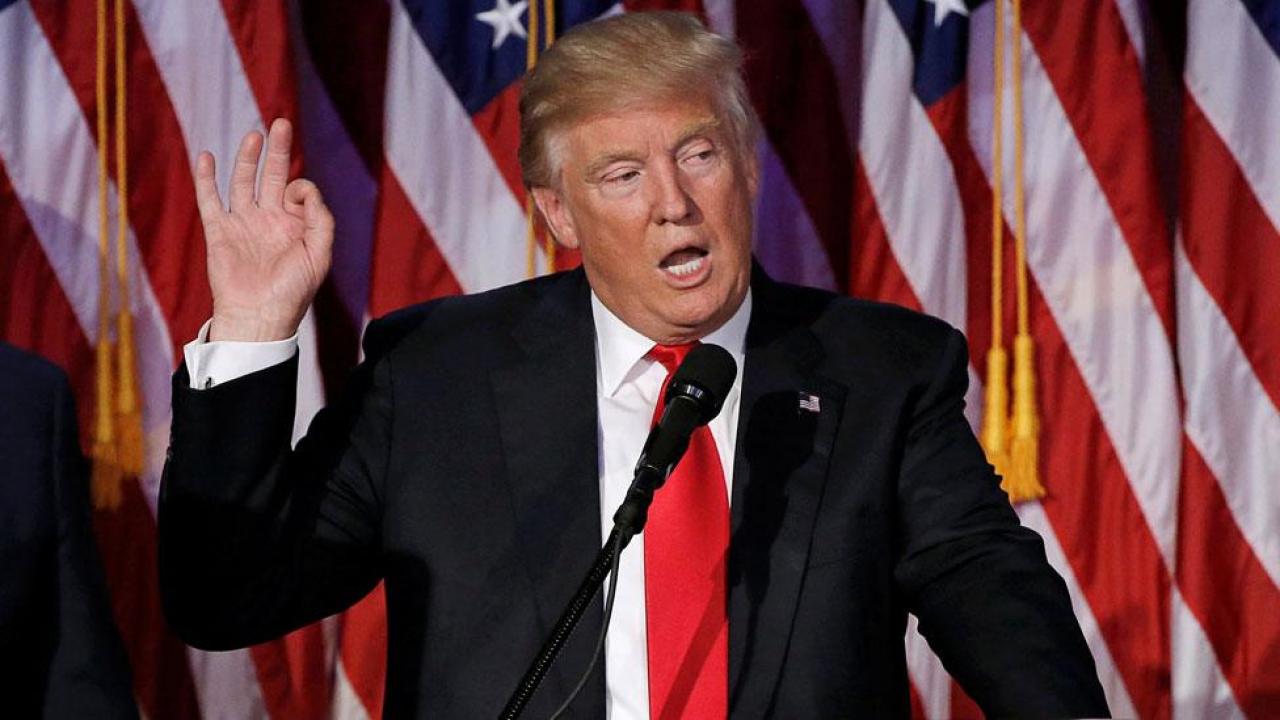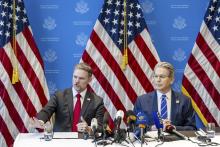
Although trade relations did not change much during Donald Trump's first administration, his influence over Congress and the Supreme Court could favor his protectionist agenda.
Manufacturing supply chains are undergoing a transformation at a global level. To find an answer to this phenomenon we must consider economic, geopolitical and even technological factors. If we are more specific, we can mention the risk of concentration, the rise of economic protectionism and the trade war between the United States and China. This was the premise of the Global Trade in Flux report , presented by Citi on December 3 in Lima, Peru.
In the medium term, these factors will increase demand to diversify production and dependence on imports from China. Although the study acknowledges that it is a slow process, due to the late impact of the superpower's industrial policies. The latter has also caused other Asian economies, as well as Latin America, to gain greater shares in the global market.
However, Latin American economies still have a pending challenge for their growth: finding opportunities to diversify their exports beyond raw materials and thus add value to their goods. Although there are some signs that Chinese investments in the continent no longer only cover extractive industries, progress is still limited. Investments have gone from targeting the energy sector to the mining sector.
A clear example is the construction of the Chancay megaport in Peru, under the direction of the Chinese company Cosco Shipping Ports. This is a mega-project that, among other functions, speeds up the shipment of copper and other metals from South America to China.
Citi also argues that Latin American countries should take advantage of their friendly relations with other Asian economies, as well as the United States and Europe, to diversify the type of investments under the slogan of friendshoring . This is a model in which supply chains are focused on countries considered political and economic allies.
NEARSHORING AND THE SEMICONDUCTOR MARKET
Based on this principle, several transnational companies are opting for nearshoring , that is, relocating their production chains to markets that offer friendlier conditions than conventional ones. This is not only due to geographical issues, but also regulatory ones, as demonstrated by the well-known success of Chinese companies based in Mexico, due to the imposition of higher tariffs in the US since the first administration of Donald Trump.
Not surprisingly, the return of the Republican tycoon to the White House promises to intensify this trend. At the same time, another key change in global supply chains relates to the semiconductor market. This is driven by political interventions motivated by national security concerns, both to reduce the concentration of high-end semiconductor manufacturing in Taiwan and to rein in China’s technological ambitions. In the process, the West is imposing punitive controls on the Asian dragon’s exports.
The Citi report notes that this has three major implications: lower profitability for large investments in high-end chips, as major Western companies lose access to China-related revenues. At the same time, technological innovation in this country will require more time and costs due to sanctions linked to the US.
Second, there is a greater likelihood of overinvestment in legacy chip segments that China produces and exports, which would hurt other existing players. Finally, decoupling technology supply chains could create new opportunities for Latin America over time if the US is able to increase its share of global semiconductor manufacturing capacity.
EXPECTATIONS FOR THE TRUMP ADMINISTRATION
While there is fear that Donald Trump's second administration, which will begin in January 2025, will destabilize global trade due to his speech advocating radical protectionism, there is the "reassuring" precedent of his first presidency (2017-2021).
“If we take that government as a model, we would have uncertainty and volatility in asset prices, but in the end it was not a very profound transformation of global trade patterns or of the international financial architecture. Sure, there was decoupling between the United States and China, but in general, many of the trade patterns have remained similar,” said Ernesto Revilla, Head of Latin America Economics at Citi , during the presentation of Global Trade in Flux .
Although Revilla points out that this time, Trump will have greater freedom to raise tariffs or lower corporate taxes, due to his legislative majority and control of the US Supreme Court. These measures would stimulate higher inflation and therefore higher interest rates, which will be detrimental to Latin American economies.
Meanwhile, in recent years, despite the fact that the US has maintained its role as Latin America's largest trading partner, if the figures are analysed by country, China has taken the lead in most cases, such as Peru, Chile, Brazil and Argentina. For Revilla, the stagnation of trade flows between Washington and these countries is a situation that is very difficult to reverse.
“The United States has undergone a major transformation in the structure of its economy over the past 20 years. It has gone from being a manufacturing economy that produced goods that the rest of the world demanded, to now being fundamentally an economy that produces services. Many of these are also exchanged globally, but if the economies of the world like those of Latin America want to buy goods, China is now the main producer,” Revilla told AméricaEconomía .
AFTERMATH OF JUDICIAL REFORM IN MEXICO
On the other hand, Trump will have to take new positions in the face of the geopolitical problems that the Biden administration experienced in the region. A clear example is Mexico's Judicial Reform, which instituted the popular election of magistrates. It has been a measure criticized for undermining the independence of powers in the Aztec country, although defended by the governments of Andrés Manuel López Obrador and Claudia Sheinbaum.
For Revilla, the approval of the reform is a “headwind” for nearshoring in Mexico, because it calls into question the confidence of foreign investors in Mexico’s legal framework. Even so, the election of half of the country’s judges will not be held until 2025, while the remaining magistrates will be elected in 2027. For the Mexican economist, the first election will be crucial to defining the renewal of the T-MEC in 2026.
However, it is possible that the Trump administration will be more lax on institutional issues than the Democrats. “It may be that Trump feels satisfied with the agreements he has with the country on migration and drug trafficking and does not get involved as much in the issues of constitutional reform, or it may be that with the influence of Marco Rubio, the new Secretary of State with Cuban roots, he wants to make himself more present,” Revilla told AméricaEconomía .









